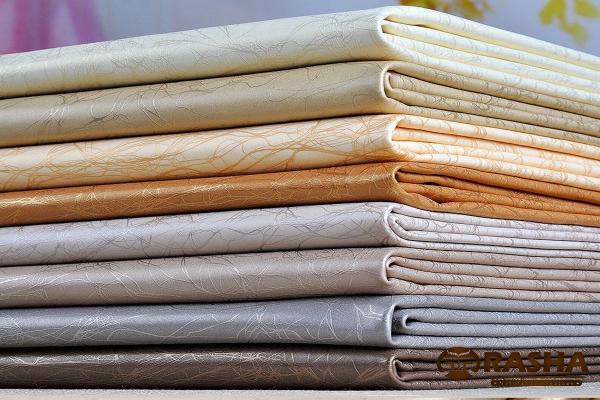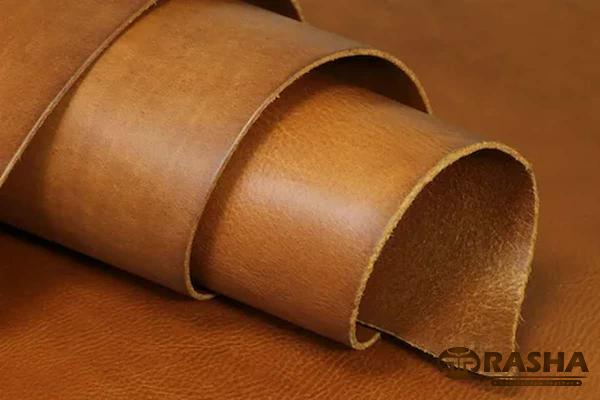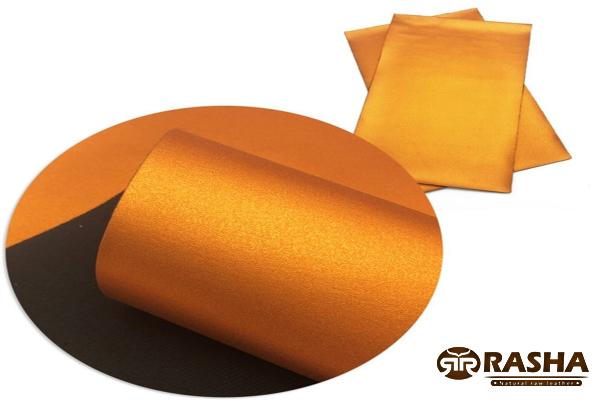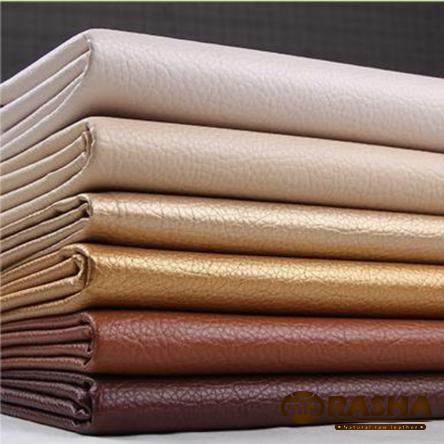When it comes to luxurious and high-quality leather, two popular options often come up – calfskin and lambskin. Both materials have their unique characteristics and appeal, making them highly sought after in the fashion and leather industries. In this summary, we will explore the key differences between calfskin and lambskin, including their origins, texture, durability, and preferred uses. Calfskin is obtained from the skin of young cattle or calves, typically within three weeks to a few months of birth. Being young, calfskin is known for its softness, smooth texture, and suppleness. It has a fine grain and a silky feel, making it a top choice for premium leather goods such as high-end handbags, wallets, and shoes. Calfskin leather is also highly durable and can withstand wear and tear, making it a popular choice for products that require longevity. On the other hand, lambskin is derived from the skin of young lambs, typically aged between two and eight months. Like calfskin, lambskin leather is exceptionally soft, lightweight, and has a velvety texture. The delicate grain structure of lambskin gives it a luxurious and delicate appearance, making it a preferred choice for designer clothing, gloves, and high-end accessories. However, due to its delicate nature, lambskin is not as durable as calfskin and requires careful handling and maintenance. In terms of appearance, calfskin and lambskin have distinct characteristics. Calfskin leather typically has a larger, more pronounced grain, giving it a textured and luxurious feel. Its grain may have slight imperfections, making each piece unique. Lambskin, on the other hand, has a smaller, more even grain pattern, resulting in a smoother and more refined appearance. The grain of lambskin is also less pronounced, giving it a sleek and elegant look. When it comes to durability, calfskin leather tends to be more robust and long-lasting than lambskin. This is because calfskin comes from a larger animal and has a denser and thicker skin. It is more resistant to scratches, abrasions, and stretching, making it ideal for products that require frequent use and exposure to the elements. Lambskin, although softer and more luxurious, is more prone to creasing, tearing, and damage, requiring extra care to maintain its pristine condition.

leather
 In terms of versatility, both calfskin and lambskin offer various applications in the fashion industry. Calfskin’s durability makes it highly suitable for products that undergo significant wear, such as shoes and handbags. Its strength and ability to retain shape make it an excellent choice for structured accessories. Lambskin, with its lightweight and soft characteristics, is well-suited for clothing items that require draping and a more delicate touch. Its smooth texture and luxurious appearance make it a popular choice for high-end jackets, skirts, and dresses. When it comes to pricing, calfskin leather tends to be more expensive than lambskin due to its durability, versatility, and broader range of applications. Calfskin is often associated with luxury brands and products, commanding a higher price point in the market. Lambskin, while slightly more affordable, is still considered a premium material in the world of fashion and luxury goods. In conclusion, calfskin and lambskin are both highly prized materials in the fashion industry, each with its own distinct characteristics and applications. Calfskin offers durability, strength, and a textured feel, while lambskin offers unparalleled softness, smoothness, and a refined appearance. Understanding the differences between the two allows consumers to make informed decisions when investing in high-quality leather products. Whether choosing calfskin or lambskin, both options epitomize luxury and elegance in their own unique ways. Calfskin vs. Lambskin: Understanding the Differences and Making Informed Business Decisions Introduction: In the world of fashion and luxury goods, the choice of leather plays a crucial role in determining the quality and appeal of a product. Calfskin and lambskin are two popular options that are highly sought after by manufacturers, designers, and consumers alike. Understanding the differences between these two materials is essential for businesses involved in the production and sale of leather-based goods. In this article, we will delve deeper into the unique characteristics of calfskin and lambskin, covering aspects such as origin, texture, durability, preferred uses, and how businesses can make informed decisions based on these factors. 1. Origins: Calfskin is obtained from young cattle or calves, typically within three weeks to a few months of birth. It is a byproduct of the beef industry and is sourced from animals that are raised for meat. Lambskin, on the other hand, comes from young lambs aged between two and eight months. It is a byproduct of the sheep and lamb industry and is obtained from animals raised for wool and meat.
In terms of versatility, both calfskin and lambskin offer various applications in the fashion industry. Calfskin’s durability makes it highly suitable for products that undergo significant wear, such as shoes and handbags. Its strength and ability to retain shape make it an excellent choice for structured accessories. Lambskin, with its lightweight and soft characteristics, is well-suited for clothing items that require draping and a more delicate touch. Its smooth texture and luxurious appearance make it a popular choice for high-end jackets, skirts, and dresses. When it comes to pricing, calfskin leather tends to be more expensive than lambskin due to its durability, versatility, and broader range of applications. Calfskin is often associated with luxury brands and products, commanding a higher price point in the market. Lambskin, while slightly more affordable, is still considered a premium material in the world of fashion and luxury goods. In conclusion, calfskin and lambskin are both highly prized materials in the fashion industry, each with its own distinct characteristics and applications. Calfskin offers durability, strength, and a textured feel, while lambskin offers unparalleled softness, smoothness, and a refined appearance. Understanding the differences between the two allows consumers to make informed decisions when investing in high-quality leather products. Whether choosing calfskin or lambskin, both options epitomize luxury and elegance in their own unique ways. Calfskin vs. Lambskin: Understanding the Differences and Making Informed Business Decisions Introduction: In the world of fashion and luxury goods, the choice of leather plays a crucial role in determining the quality and appeal of a product. Calfskin and lambskin are two popular options that are highly sought after by manufacturers, designers, and consumers alike. Understanding the differences between these two materials is essential for businesses involved in the production and sale of leather-based goods. In this article, we will delve deeper into the unique characteristics of calfskin and lambskin, covering aspects such as origin, texture, durability, preferred uses, and how businesses can make informed decisions based on these factors. 1. Origins: Calfskin is obtained from young cattle or calves, typically within three weeks to a few months of birth. It is a byproduct of the beef industry and is sourced from animals that are raised for meat. Lambskin, on the other hand, comes from young lambs aged between two and eight months. It is a byproduct of the sheep and lamb industry and is obtained from animals raised for wool and meat.
Specifications of leather
 Understanding the origins of these materials allows businesses to make informed decisions based on their ethical and sustainable sourcing practices. 2. Texture: Calfskin is known for its softness, smooth texture, and suppleness. It has a fine grain and a silky feel, making it a top choice for luxurious leather goods. In contrast, lambskin has a velvety texture that is exceptionally soft and lightweight. Its delicate grain structure gives it a luxurious and delicate appearance, making it popular in high-end fashion items. Both textures have their unique appeal, and businesses need to consider the texture that aligns with their brand aesthetics and target market preferences. 3. Durability: When it comes to durability, calfskin takes the lead. The skin of the calf is thicker and denser compared to lambskin, making it more resistant to scratches, tearing, and stretching. Calfskin leather is known to retain its shape and withstand rigorous wear and tear. In comparison, lambskin is more delicate and requires careful handling. It is prone to creasing and can be easily damaged if not maintained properly. Understanding the durability of these materials is crucial for businesses looking to produce long-lasting and high-quality leather goods. 4. Preferred Uses: Calfskin leather’s durability and strength make it an excellent choice for products that require frequent use and exposure to the elements. Premium handbags, shoes, wallets, and belts are commonly made from calfskin due to its ability to withstand wear with grace. Its strength also makes it suitable for structured accessories that require shape retention. Lambskin, with its lightweight and soft characteristics, is well-suited for clothing items that require draping and a delicate touch. High-end jackets, skirts, dresses, and gloves often feature lambskin for its luxurious appearance and feel. 5. Appearance: Calfskin leather typically has a larger and more pronounced grain, giving it a textured and luxurious feel. The grain may have slight imperfections, making each piece of calfskin unique. Lambskin, on the other hand, has a smaller, more even grain pattern, resulting in a smoother and more refined appearance. The grain of lambskin is less pronounced, giving it a sleek and elegant look. Businesses should consider the desired aesthetic and the overall brand image when choosing between the two based on appearance. 6. Maintenance: Maintenance is an essential aspect to consider when working with calfskin and lambskin. Calfskin, being more durable, is easier in terms of maintenance. It is less prone to damage, can withstand regular cleaning, and requires less upkeep. Lambskin, on the other hand, requires more delicate care. It is essential to keep lambskin away from excessive moisture, heat, and sunlight, as exposure to these elements can cause the material to dry and crack. Businesses need to inform consumers about the specific maintenance requirements of each material to ensure the longevity of their products.
Understanding the origins of these materials allows businesses to make informed decisions based on their ethical and sustainable sourcing practices. 2. Texture: Calfskin is known for its softness, smooth texture, and suppleness. It has a fine grain and a silky feel, making it a top choice for luxurious leather goods. In contrast, lambskin has a velvety texture that is exceptionally soft and lightweight. Its delicate grain structure gives it a luxurious and delicate appearance, making it popular in high-end fashion items. Both textures have their unique appeal, and businesses need to consider the texture that aligns with their brand aesthetics and target market preferences. 3. Durability: When it comes to durability, calfskin takes the lead. The skin of the calf is thicker and denser compared to lambskin, making it more resistant to scratches, tearing, and stretching. Calfskin leather is known to retain its shape and withstand rigorous wear and tear. In comparison, lambskin is more delicate and requires careful handling. It is prone to creasing and can be easily damaged if not maintained properly. Understanding the durability of these materials is crucial for businesses looking to produce long-lasting and high-quality leather goods. 4. Preferred Uses: Calfskin leather’s durability and strength make it an excellent choice for products that require frequent use and exposure to the elements. Premium handbags, shoes, wallets, and belts are commonly made from calfskin due to its ability to withstand wear with grace. Its strength also makes it suitable for structured accessories that require shape retention. Lambskin, with its lightweight and soft characteristics, is well-suited for clothing items that require draping and a delicate touch. High-end jackets, skirts, dresses, and gloves often feature lambskin for its luxurious appearance and feel. 5. Appearance: Calfskin leather typically has a larger and more pronounced grain, giving it a textured and luxurious feel. The grain may have slight imperfections, making each piece of calfskin unique. Lambskin, on the other hand, has a smaller, more even grain pattern, resulting in a smoother and more refined appearance. The grain of lambskin is less pronounced, giving it a sleek and elegant look. Businesses should consider the desired aesthetic and the overall brand image when choosing between the two based on appearance. 6. Maintenance: Maintenance is an essential aspect to consider when working with calfskin and lambskin. Calfskin, being more durable, is easier in terms of maintenance. It is less prone to damage, can withstand regular cleaning, and requires less upkeep. Lambskin, on the other hand, requires more delicate care. It is essential to keep lambskin away from excessive moisture, heat, and sunlight, as exposure to these elements can cause the material to dry and crack. Businesses need to inform consumers about the specific maintenance requirements of each material to ensure the longevity of their products.
buy leather
 7. Pricing: In terms of pricing, calfskin leather tends to be more expensive than lambskin. This price difference is due to calfskin’s durability, versatility, and broader range of applications. Calfskin has been associated with luxury brands and products, commanding a higher price point in the market. Lambskin, while slightly more affordable, is still considered a premium material. Understanding the pricing dynamics can help businesses set appropriate price points for their products, accounting for the cost of the material and aligning with their target market’s expectations. 8. Target Market Considerations: Understanding the preferences of the target market is vital for businesses when choosing between calfskin and lambskin. Some customers may prefer the luxurious and durable qualities of calfskin, while others may appreciate the softness and delicate appearance of lambskin. Luxury fashion brands may find that their customers are willing to pay a premium for calfskin goods, while businesses targeting a younger, trend-focused market may opt for lambskin to meet their customers’ preferences. Tailoring the choice of leather to the target market’s preferences can enhance customer satisfaction and drive sales. 9. Brand Image and Values: The choice between calfskin and lambskin can also align with a business’s brand image and values. Calfskin, with its durability and association with luxury, can project a sense of timelessness and sophistication. Lambskin, with its softness and delicacy, can evoke a sense of elegance and refinement. By carefully selecting the leather material that aligns with their brand image, businesses can enhance brand perception and strengthen their core values. 10. Sustainability Considerations: In recent years, sustainability has become a significant consideration for many businesses. When choosing between calfskin and lambskin, companies must consider the environmental impact and animal welfare factors associated with the production and sourcing of these materials. Businesses can opt for leather suppliers that adhere to ethical practices and offer transparency in their supply chain. This enables companies to align with the growing consumer demand for sustainable and cruelty-free products. Conclusion: Understanding the differences between calfskin and lambskin leather is essential for businesses seeking to create high-quality and marketable leather goods. While calfskin offers durability, strength, and texture, lambskin provides a luxurious, lightweight, and delicate appeal. By considering factors such as the origins, texture, durability, preferred uses, appearance, maintenance, pricing, target market preferences, brand image, and sustainability, businesses can make informed decisions about the leather material that best suits their needs. Making the right choice between calfskin and lambskin contributes to the creation of exceptional products that resonate with customers and reinforce brand value.
7. Pricing: In terms of pricing, calfskin leather tends to be more expensive than lambskin. This price difference is due to calfskin’s durability, versatility, and broader range of applications. Calfskin has been associated with luxury brands and products, commanding a higher price point in the market. Lambskin, while slightly more affordable, is still considered a premium material. Understanding the pricing dynamics can help businesses set appropriate price points for their products, accounting for the cost of the material and aligning with their target market’s expectations. 8. Target Market Considerations: Understanding the preferences of the target market is vital for businesses when choosing between calfskin and lambskin. Some customers may prefer the luxurious and durable qualities of calfskin, while others may appreciate the softness and delicate appearance of lambskin. Luxury fashion brands may find that their customers are willing to pay a premium for calfskin goods, while businesses targeting a younger, trend-focused market may opt for lambskin to meet their customers’ preferences. Tailoring the choice of leather to the target market’s preferences can enhance customer satisfaction and drive sales. 9. Brand Image and Values: The choice between calfskin and lambskin can also align with a business’s brand image and values. Calfskin, with its durability and association with luxury, can project a sense of timelessness and sophistication. Lambskin, with its softness and delicacy, can evoke a sense of elegance and refinement. By carefully selecting the leather material that aligns with their brand image, businesses can enhance brand perception and strengthen their core values. 10. Sustainability Considerations: In recent years, sustainability has become a significant consideration for many businesses. When choosing between calfskin and lambskin, companies must consider the environmental impact and animal welfare factors associated with the production and sourcing of these materials. Businesses can opt for leather suppliers that adhere to ethical practices and offer transparency in their supply chain. This enables companies to align with the growing consumer demand for sustainable and cruelty-free products. Conclusion: Understanding the differences between calfskin and lambskin leather is essential for businesses seeking to create high-quality and marketable leather goods. While calfskin offers durability, strength, and texture, lambskin provides a luxurious, lightweight, and delicate appeal. By considering factors such as the origins, texture, durability, preferred uses, appearance, maintenance, pricing, target market preferences, brand image, and sustainability, businesses can make informed decisions about the leather material that best suits their needs. Making the right choice between calfskin and lambskin contributes to the creation of exceptional products that resonate with customers and reinforce brand value.










Your comment submitted.